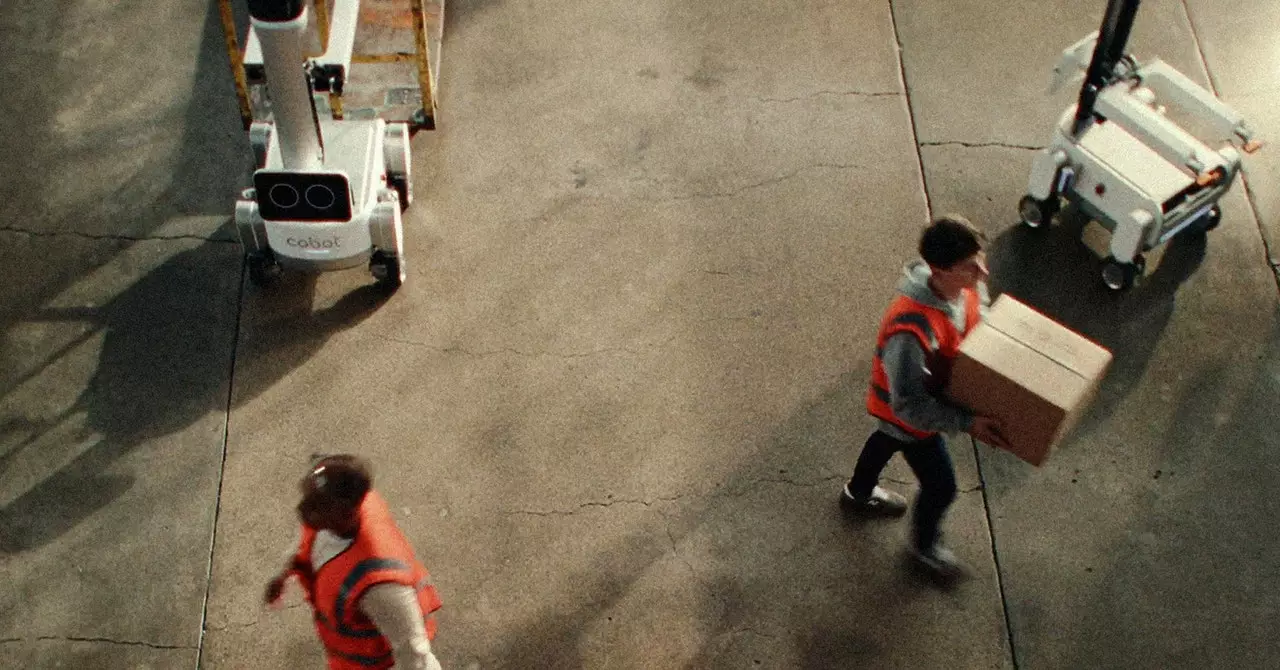In the world of artificial intelligence and robotics, there is a growing trend towards the development of collaborative robots, or cobots. Unlike their anthropomorphic counterparts, these machines, like Proxie, are designed to work in tandem with human workers, facilitating smoother operations in demanding environments such as warehouses and factories. Cobot, the company behind Proxie, is leading the charge in this sector by offering innovative solutions that not only complement human labor but also address the pressing need for efficiency and speed in logistics.
One of the key features of Proxie is its swappable battery. This design choice is strategic, allowing the robots to continue functioning without the downtime typically associated with recharging. This aspect is particularly important for companies that rely on consistent delivery and movement of goods. Although Cobot has yet to reveal the pricing for purchasing or leasing Proxie, current mobile robots generally command prices ranging from tens of thousands to several hundred thousand dollars.
The essence of Proxie’s design lies in its ability to collaborate effectively with human teams. Unlike many robotic systems that operate independently, Proxie is built to navigate busy environments, moving carts and avoiding obstacles, all while sharing space with human workers. This harmonious interaction mitigates the risks of accidents and inefficiencies that can arise in dynamic settings. As Stephen Porter, a representative from Cobot, points out, the goal is to create robots that can upgrade their capabilities alongside improvements in artificial intelligence (AI), leading to more sophisticated interaction and manipulation over time.
Advancements in natural language processing present a further evolution in Proxie’s capabilities. By integrating a large language model, Proxie can respond to voice commands, showcasing a leap toward more intuitive human-robot communication. For instance, when a user instructs Proxie to “Go to dock 3 and grab the cart by the door,” the robot intelligently processes the request and acts on it. Such developments signify a move toward user-friendly robotics that can seamlessly integrate into existing workflows.
A Strategic Shift from Humanoids to Practical Solutions
While many organizations are racing to produce humanoid robots, Cobot’s approach diverges significantly. Porter acknowledges that while there are promising projects involving humanoid robots, including Amazon’s collaborations with startups like Agility Robotics, the technology is still in its infancy and is often prohibitive in terms of cost and reliability. Humanoids present unique challenges, with various models priced from tens of thousands up to hundreds of thousands of dollars, exacerbated by inconsistent autonomous capabilities.
Instead of pursuing expensive humanoid designs, Cobot’s Proxie is focused on executing more mundane tasks—functions that human workers often find undesirable. For example, heavy cart-pushing is a task that burdens many employees. Proxie alleviates this labor, enhancing productivity and allowing human workers to focus on more complex responsibilities. Erez Agmoni from Interwoven Ventures, who has been instrumental in the Cobot pilot program at Maersk, highlights the potential of Proxie to expand in scope due to its simplicity and adaptability to existing warehouse systems.
As the landscape of robotics continues to evolve, Proxie embodies an innovative model that caters to the pragmatic needs of businesses while paving the way for future advancements in robotics. Fady Saad from Cybernetix urges the importance of an evolutionary approach to robotic design. He believes that while Proxie starts with basic functions, its potential to grow into something more complex, including a humanoid shape if that becomes viable, is a sound strategy.
This perspective is echoed by other thought leaders in the robotics field, such as Rodney Brooks, who posits that the necessity in factories and warehouses lies not in humanoids but rather in efficient machines capable of streamlining operations. The notion that wheels have been a superior solution for transportation tasks reaffirms the practicality underpinning Proxie’s design.
As industries continue to face labor shortages and rising demands, the utility of collaborative robots like Proxie becomes increasingly salient. By focusing on collaboration, communication, and capability evolution, Cobot’s Proxie sets a new standard for robotic assistance—one that prioritizes accessible technology capable of transforming the workspace without the complexities and high costs associated with humanoids. The future may still hold room for anthropomorphic designs, but for now, Proxie exemplifies the perfect balance between innovation and practicality in robotics.

